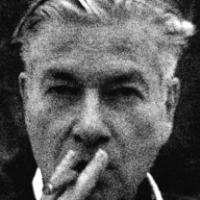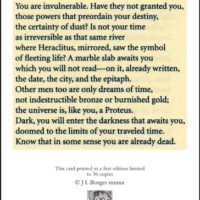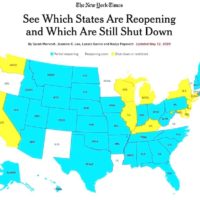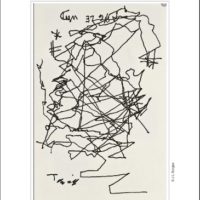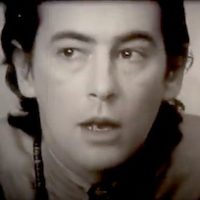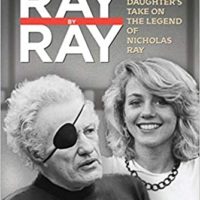Report and interview by The Graduate Center, CUNY: “I thought I was prepared, as a nurse to see a death on the floor. But doing a shift witnessing several deaths is overwhelming,” says Fernand A. De Los Reyes, a Ph.D candidate in nursing studies at The Graduate Center of the City University of New York. De Los Reyes works full time as a staff nurse, caring for COVID-19 patients at Mount Sinai Morningside hospital in Manhattan. He adds: “I am praying that those who protest for immediate opening will not end up in the Thermo King tractor trailer for dead bodies parked behind our hospital.”
Jürgen Ploog, R.I.P.
He died at home in Frankfurt, peacefully, surrounded by family. Jürgen Ploog was 85. “Jay,” the name he went by among close friends, was widely regarded as one of Germany’s premiere second-generation Beat writers. But his narrative fiction—like that of William S. Burroughs, a mentor with whom he was associated—was more experimental and closer to Brion Gysin’s or J.G. Ballard’s than to Jack Kerouac’s or Allen Ginsberg’s.
Jay called his style “cut prose,” an adventurous collage technique developed from the cut-up methods formulated by Burroughs and Gysin back in the late 1950s and early 1960s. He was a gifted visual collagist as well, producing hybrid works in recent years such as Flesh Film, a fever dream of a novella originally published in a digital prose-only edition by realitystudio.org, and subsequently perfected in print by Moloko+.
GC CUNY Keeps the Conversation Going:
Six Fast-Paced Doctoral Presentations on Diverse Topics from Solar Energy to Anti-Corruption Laws
Tune in today—Tuesday @ 7:30 p.m.—for a 30-minute online showcase in TED-style talks.
Coping With the Shitstorm #7
Bach: Brandenburg Concerto No. 6, BWV 1051 | movement i. performed Aug. 10, 2019, at the Norfolk Chamber Music Festival by Shuhan Wang (viola); Bethany Hargreaves (viola); Ole Akahoshi (cello); John Belk (cello); Clare Bradford (cello); Amy Nickler (double bass); Hilda Huang, (harpsichord).
Borges: ‘To Whoever Is Reading Me’
You are invulnerable. Have they not granted you,
those powers that preordain your destiny,
the certainty of dust? [. . .]
Dark, you will enter the darkness that awaits you,
doomed to the limits of your traveled time.
Know that in some sense you are already dead.
Bill Murray Takes a Cue from Nancy
He masks up in his bathtub too.
Famous Last Words
“We are in this together. We are stronger together.”
It’s Covid Time in Times Square and in the not united U.S. of A.
Borges: ‘The Thing I Am’
‘I have forgotten my name. I am not Borges
(Borges died at La Verde, under fire)
Nor am I Acevedo, dreaming of battle . . .
On the Other Side of the Pond, Locking Boris Down
David Eros responds to the U.K. prime minister’s lockdown speech.
Music for All Seasons: Little Richard Meets Vivaldi
Wouldn’t it be grand?
Michael McClure, R.I.P.
Dead at 87, he was foremost a poet, but also a playwright, essayist, and novelist.
‘A Daughter’s Take on the Legend of Nicholas Ray’
Three Rooms Press has just published RAY BY RAY, a combination memoir-biography by Nicca Ray, daughter of the maverick Hollywood director Nicholas Ray, with an introduction by Samantha Fuller, daughter of another Hollywood maverick, the screenwriter/director Sam Fuller. The publisher will present a livestream book launch Saturday afternoon—May 9 @ 2pm-4pm EST — featuring the […]
Nancy Masks Up in Her Bathtub
She’s taking no chances. Gary Lee-Nova has been exploring Bushmiller’s work for many years. This particular effort originated in an email exchange with Denis Kitchen who founded Kitchen Sink Press. Kitchen Sink published five volumes of Bushmiller’s work during the 1980s and ’90s. “We’ve been internet pals for several years,” Lee-Nova says. During the early […]
GC CUNY Keeps the Conversation Going:
‘The Future of Health Care’ featuring Margot Sanger-Katz, Jonathan Gruber, Avik Roy, and Dana Singiser; also the Eminent Author Anne Carson on Greek Tragedy
While events are postponed at The Graduate Center of the City University of New York in the heart of Manhattan, videos of recent public programs from its archive will be featured here for your enjoyment. The videos offer illuminating discussions in two main categories: insights into current events and conversations with leading writers and artists.
Carl Weissner at the Top of His Game
He was the great German translator and agent of the U.S. underground. Now his collected journalism is being published.
GC CUNY Keeps the Conversation Going:
Andrew Yang, Leslie McCall, and Richard Reeves
on Capitalism and Democracy; also,
Authors Julia Alvarez and Elizabeth Acevedo
on Craft, Legacy, and Literature
While events are postponed at The Graduate Center of the City University of New York in the heart of Manhattan, videos of recent public programs from its archive will be featured here for your enjoyment. The videos offer illuminating discussions in two main categories: insights into current events and conversations with leading writers and artists.
Postscript to ‘The Art of Drawing’
By a blindfolded painter in his Chekhovian hat who chooses to remain nameless.


